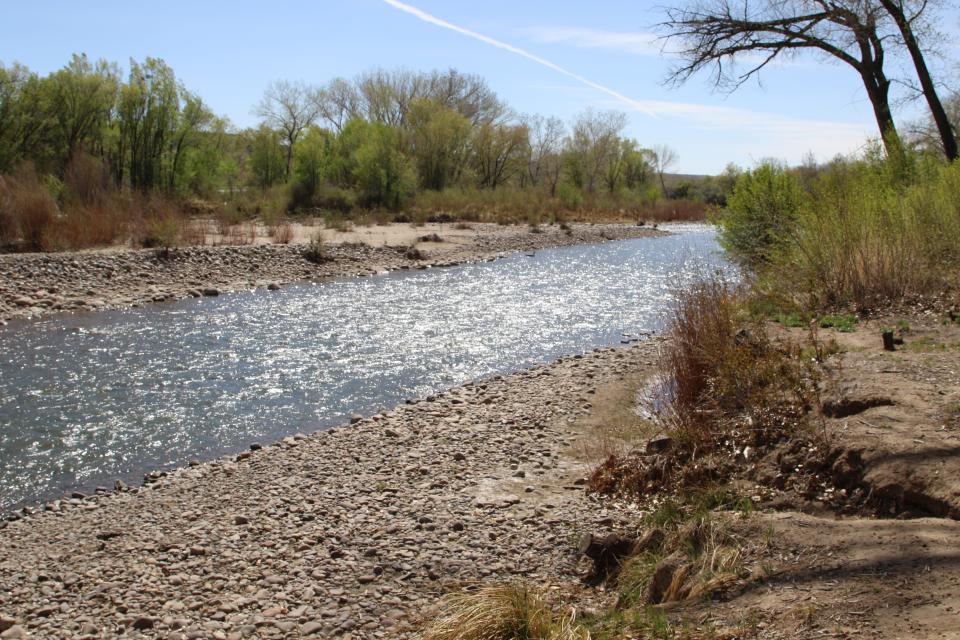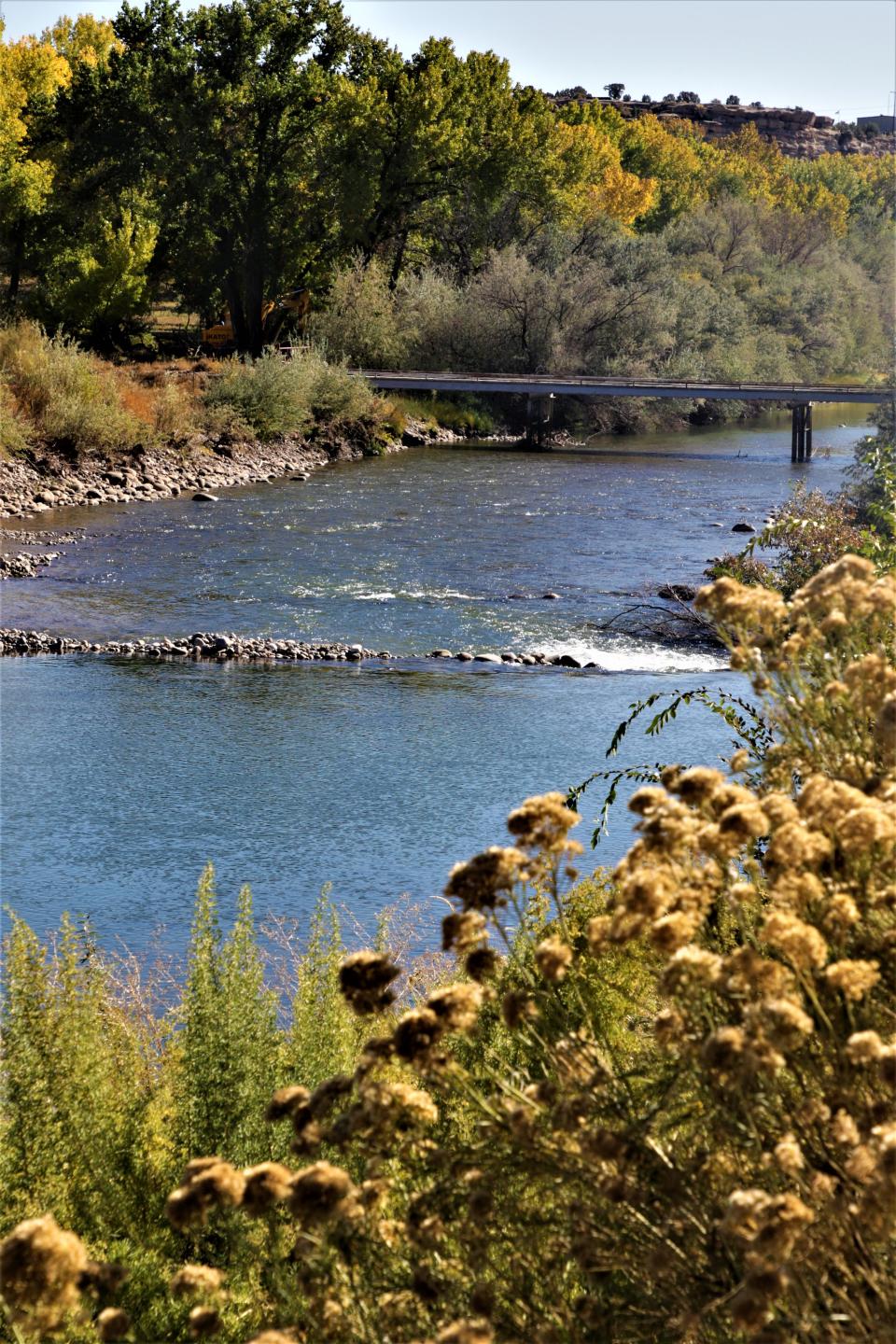Officials outline plans for grant money awarded from Gold King Mine spill settlement
FARMINGTON — A total of five entities in San Juan County have been awarded nearly $4 million in grant funding by the Attorney General’s Office for projects related to the 2015 Gold King Mine spill.
The money was part of an $11 million settlement the state of New Mexico reached with mining company defendants the Sunnyside Gold Corporation, the Kinross Gold Corporation and Kinross Gold U.S.A. Inc. for their role in the incident that resulted in millions of gallons of toxic materials leaking into the Animas and San Juan rivers.
Earlier this year, the AG’s Office sought proposals from entities throughout northwest New Mexico for projects designed to address the effects of the spill, and the agency issued a news release on Dec. 20 announcing which of those applicants had been awarded funding.
San Juan County’s New Mexico State University Extension Office led the way with a grant of more than $930,000. Bonnie Hopkins, the county program director, told members of the San Juan County Commission during their Dec. 20 meeting that the grant will be used for a variety of purposes, including their hiring of new personnel at the office.
The agency plans to hire a farmer incubator coordinator at its Growing Forward farm, as well as a diversity, equity and inclusion training program coordinator who will focus on work force development from the county’s marginalized communities, including veterans and the homeless.
“We want to teach them agricultural skills so that they can go on to start their own businesses or go into agricultural production,” Hopkins said.

Some of the money will fund AmeriCorps VISTA volunteers, two summer intern positions and various outreach and training materials, Hopkins said. Additionally, she said the office will use some of the money to purchase equipment that local farmers can check out from the extension office for use on their farms.
Hopkins said a portion of the funding also would be used at the Farmington Agricultural Science Center to fund a program education coordinator who will develop a curriculum that teaches people how to grow crops inside greenhouses or hoop houses.
“So, we are excited to bring jobs to San Juan County and also training programs for farmers and ranchers within the region,” she said.
San Juan County and the City of Farmington received the second-largest grants, drawing nearly $850,000 each. County Manager Mike Stark said during the Dec. 20 meeting the county would use the funding to help build a new county extension office and upgrade an irrigation project.
The county also has applied for funding from the New Mexico Office of the Natural Resources Trustee for part of the $10 million in Gold King Mine spill settlement money the state received from the U.S. Environmental Protection Agency for its role in the incident. One of the county’s proposals for that money also would be used to help fund the new extension office and irrigation project.
Stark said the total budget for the building is $3.5 million. The county has pledged a matching sum of $350,000 for the project, meaning that with the grant award from the AG’s Office, approximately $2.3 million still needs to be raised.

The City of Farmington has earmarked its grant for a trails project, according to Warren Unsicker, the city’s economic development director. He said the North Trails Extension project is envisioned for the north side of the Animas River behind the Farmington Museum at Gateway Park and will extend for 2.5 miles.
The City of Aztec received more than $700,000 from the AG’s Office. City Manager Jeff Blackburn said the money would be used to improve public access to the Animas River at city parks.
Most of the work will be done at or near the Hartman-Riverside Bridge, which crosses the river between Riverside Park and the Hartman Park Sports Complex. On the south side of the bridge, he said, gabions — rock-and-wire structures that were constructed in the late 1990s to control erosion on the riverbank — have failed or collapsed and will be replaced by more environmentally friendly elements such as large boulders. Blackburn said those new elements will stabilize the riverbank on the south side.
On the north, or Riverside Park, side of the river, a rocky beach near the bridge has been overtaken by invasive species. Blackburn said the spot would be remediated and landscaped into a more attractive beach, as it is located in a lazy bend of the river and offers good low-water access to the public.
Blackburn said the project likely would not make it into the city’s budget until fiscal year 2023, which begins in July. He estimated construction would begin in the spring of 2024, although he cautioned that could stretch into 2025.
Aztec officials are committed to the project, and other improvements along the river, because they see their stretch of the waterway as being the final link in a movement to enhance the Animas from Durango, Colorado, to Farmington, he said.
The San Juan Soil and Water Conservation District received a grant of more than $640,000, money that will be used for remediation efforts along part of the San Juan and Animas rivers that were impacted by the spill, according to Jenna Wethington, the watershed coordinator at the agency.
She said the funds would be used to conduct water and soil sampling along the rivers for farmers and to put up fencing to keep livestock out of the waterways. Additionally, native grasses and shrubs will be planted in riparian areas to cool the river and enhance biodiversity, she said.
Wethington said she expects the work to begin in the spring of 2024.
The final recipient of grant funding from the settlement was the New Mexico Department of Tourism, which received $300,000. Altogether, approximately $4.3 million in grants was awarded.
Maggie Hart Stebbins, the New Mexico natural resources trustee, has said she expects her office to issue a draft restoration plan by the end of February that outlines which projects it has prioritized for funding from the $10 million EPA settlement.
Mike Easterling can be reached at 505-564-4610 or measterling@daily-times.com. Support local journalism with a digital subscription: http://bit.ly/2I6TU0e.
This article originally appeared on Farmington Daily Times: Projects designed to address impacts on rivers of 2015 toxic incident

